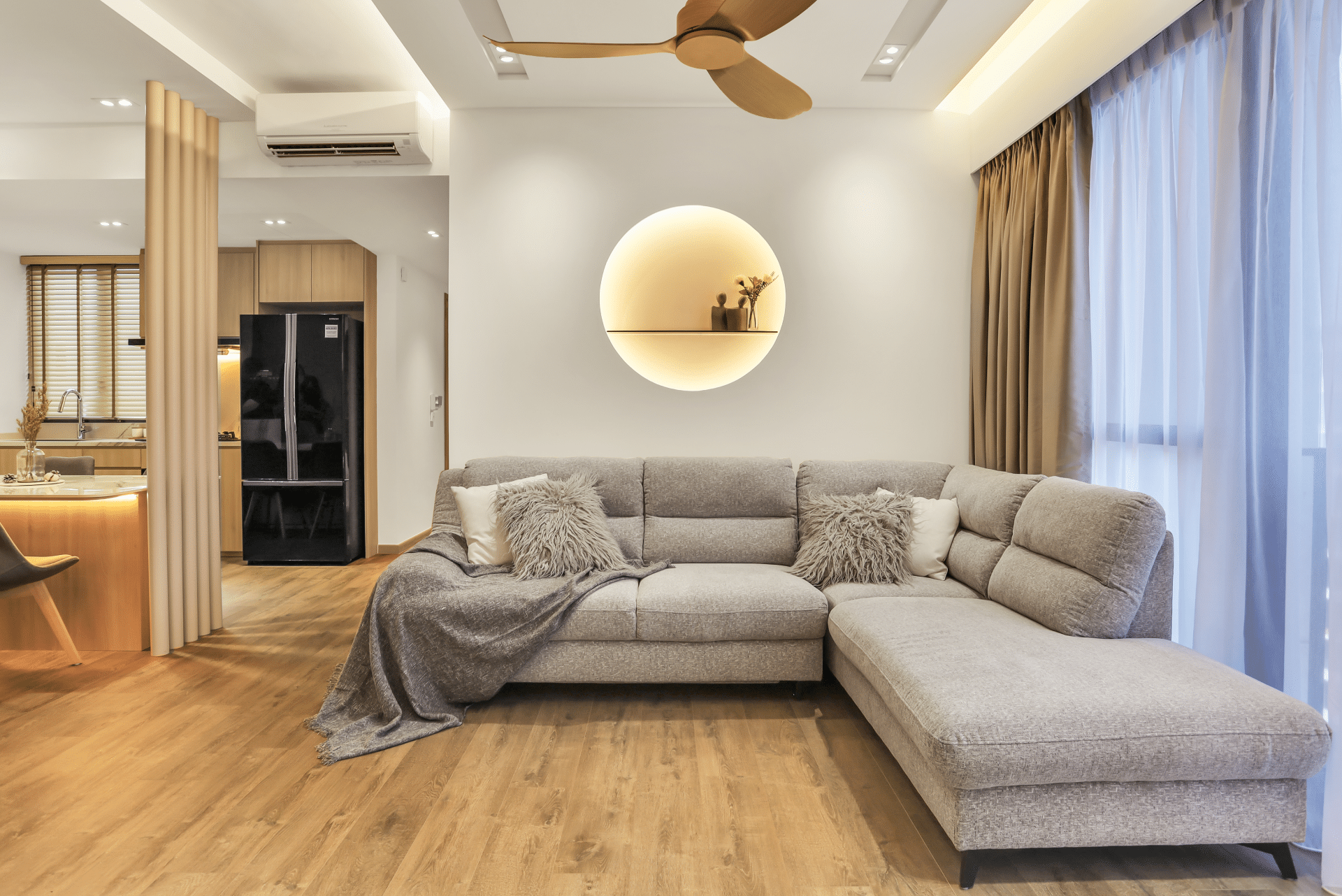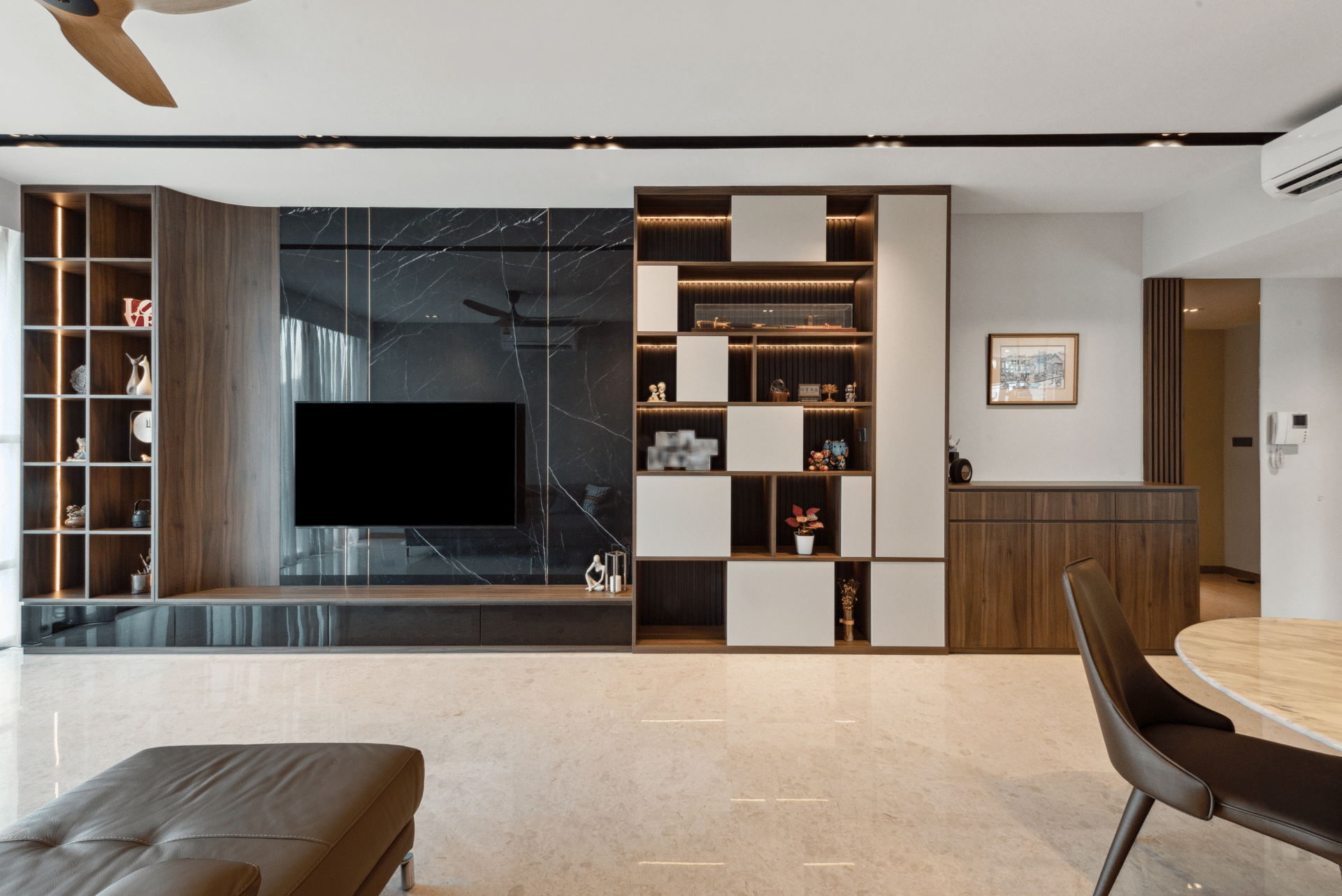How To Design Comfortable And Inviting Guest Experience
Singapore is known for its diverse culture, rich history, and reputation for hospitality. When hosting guests in Singapore, it is important to welcome them, make them feel comfortable, and allow them to experience the vibrant culture. Proper preparation minimizes hosting headaches smoothly. Strategically maximize storage, lighting flexibility, soundproofing, and charging access first, easing major frustrations effortlessly. In this blog, we will discuss how to make a guest feel welcome.
Guest Culture And Rules In Singapore Homes
Hospitality lies at the heart of Singaporean culture; they welcome guests warmly into private homes frequently. However, certain protocols and even legal regulations govern hosting to maintain harmony in this compact, diverse society.
-
Government Policies Dictate Occupancy Limits
With average households shrinking yet remaining multigenerational, Singapore implements occupancy caps, keeping units reasonably sized. Currently, regulations allow a maximum of six unrelated persons to dwell in private residential properties, regardless of actual square footage. Domestic helpers count within family units excluded from such restrictions, which tenants subletting must observe also. By limiting occupants reasonably, congestion and disturbances are minimized.
-
Visitors Bring Small Gifts To Hosts Customarily
Showing appreciation, guests traditionally present small tokens to hosts upon arriving. Etiquette expects such expressions of gratitude for the hospitality received. The type of gift varies among ethnic groups preferring particular items. Regardless, the presentations convey profound thanks. Reciprocating hospitality through mutual gifts bonds hosts and visitors meaningfully.
-
Paying Guest Concept
Paying guests in Singapore is the talk of the town these days. The “paying guest” concept involves people renting rooms within private residences and paying fees to cover lodgings beneficially. Owners offer accommodations supplemented by meal provisions flexible. Compared with hotels that are overly commercialized, homes provide comfortable conveniences, often at discounted rates pragmatically.
Additionally, meaningful connections develop delightfully through consistent interactions. This co-living approach supports owners in appreciatively offsetting living expenses while providing travelers with personalized hospitality.
Problems For Welcoming Guests In Homes In Singapore
Singaporeans pride themselves on gracious hospitality by ensuring visitors feel completely at home. However, the country’s compact living spaces and humid climate pose challenges to entertaining comfortably. Avoid common pitfalls when hosting guests through strategic preparation and design.
-
Lack Of Adequate Sleeping Space
With limited square footage, few households can readily devote an entire room as a guest bedroom. Sofas or makeshift beds crammed into common areas fail to deliver proper rest. Yet quality sleep remains essential, recharging visitors between active days. Creative solutions like convertible furniture best utilize the space when required.
-
Absence Of Adequate Wires And Charging Stations
In today’s tech-driven world, insufficient power outlets frustrate visitors trying to recharge devices quickly. Rooms ideally need ample, easily accessible ports placed intentionally around seating areas, beds, and workstations. Upgrading electrical capacity and incorporating multiple plugins creatively resolves such issues smoothly.
-
Shortage Of Storage Facilities
Clutter aggravates in compact settings swiftly. Insufficient built-ins like closets, cabinets, and shelves to stow visitor belongings out of sight conveniently add unnecessary chaos. Consequently, rooms feel cramped rapidly. Well-designed storage solutions tailored specifically to the unique dimensions and needs are organized effectively.
-
Lack Of Adjustable Lighting Accommodating Preferences
Singapore’s tropical climate makes controlling light a balancing act. While maximizing sunshine through ample windows, also incorporate adjustable lamps accommodating tasks and preferences readily. Overhead fixtures alone rarely suffice when hosting. The right lighting minimizes eyestrain reading or working effectively.
-
Absence of Backup Cooling Or Heating Options
Although pleasant generally, Singapore’s humidity fluctuates, and so do temperatures occasionally. Thus, having fans, portable air-conditioning units, or heaters on standby proves useful, even essential. Avoid scrambling and securing extra equipment only when hot or cold spells hit unexpectedly. Plan ahead.
-
Minimal Soundproofing Causing Disturbances
Singapore’s multigenerational homes bustle with activity across all hours. Yet quality sleep remains key, recharging visitors between active days. Thin walls easily transmit noises disrupting resting or working. Strategically incorporate sound minimization materials during renovations or access white noise machines to temporarily provide privacy.
-
Lack Of Customized Amenities And Touches
Generic soaps or snacks fail to deliver specialized hospitality. Source preferred items suiting visitors’ unique needs feel extra welcome. Show them tailored considerations through preferred local toiletries, favorite snacks or beverages on arrival, customized bedding, and anything resonating more thoughtfully. It’s the customized details that help visitors recall the stay fondly.
-
Absence Of Conversation Catalysts
Awkward silences plague gatherings easily without natural talking points readily available. Displaying intriguing artifacts, souvenirs, artwork, or other keepsakes prompts story swapping automatically. Even coffee table cards facilitate discussions seamlessly. Interesting accessories socialize eloquently.
-
Insufficient Places To Relax Comfortably
Quality furniture enabling guests to truly unwind remains supreme. Yet hosts rarely afford multiple ultra-plush sofas or reading nooks themselves. Compromising comfort disappoints visitors. Seek out multifunctional pieces like convertible ottomans or nesting side tables to limit the permanent occupation of precious real estate. Comfort counts enormously.
Important Tips
Singaporeans pride themselves on hospitality. Creating a welcoming environment for guests in your home takes planning across a choice of layouts, furnishings, accessories, and amenities. Follow these tips when designing for visitors to relax completely.
-
Customized Spaces Maximizing Comfort
In compact homes, customized spaces supporting visitors readily require ingenuity, such as converting sofa beds at night, stowing extra furniture daily, or opening room to accommodate company. Tailored micro-environments promote privacy and comfort best. Regular hosting, hence, requires adaptable furnishings suiting fluctuating needs smoothly. It is the most important step to feel welcomed.
-
Allocate A Designated Guest Room
Rather than expecting company to sleep on a couch or makeshift bed, dedicate a room specifically for visitors. Select a quiet, private spot removed from heavily trafficked areas. Invest in an excellent quality mattress and bedding, focusing first on comfort. Additionally, incorporate storage for belongings and a desk for working. Make this a true home away from home.
-
Craft A Soothing Color Palette And Texture Profile
Color and texture details set the overall aesthetic tone subtly yet powerfully. Cool hues like blues and greens have calming properties, while warm tones like tans, peach, and gold energize subtly. Incorporate natural textures from woods, woven textiles, metals, and stone. Such choices influence the ambiance significantly.
-
Curate Special Amenities And Touches
Custom details transform basic spaces into memorable havens. Place high thread count sheets, plush robes, and slippers in rooms for added coziness. Stock up on preferred snacks and beverages, so favorites are on hand. Source locally-made toiletries from artisan brands. Display unique pieces of art or artifacts with personal meaning. Such special touches communicate care and understanding.
-
Allow For Plenty Of Storage
Reducing clutter heightens the sense of tranquility dramatically. Ensure areas have closets, shelves, baskets, and organizers aplenty to allow stowing belongings out of sight readily. Under-bed storage solves space constraints efficiently. Integrating tailor-made cabinetry with specialized compartments streamlines organization seamlessly. Proper storage facilitates maintaining tidy, inviting spaces.
-
Incorporate Multi-Functional Pieces Strategically
Given Singapore’s compact homes, select furnishings doing double or triple duty through clever design. Coffee tables with lift-tops to reveal hidden storage or nesting side tables conserve square footage. Sofas converting into beds overnight for visitors expand options readily. Dual-purpose pieces maximize flexibility ingeniously.
-
Splurge On Comfortable Seating
Few factors influence guest contentment more than quality seating. Comfortable couches, padded chairs, and plush beds satisfy like nothing else after a long day’s sightseeing. Treat visitors to that prized, ultra-cozy reading nook nestled under a window. Top-grade mattresses minimize backaches so guests are awake and refreshed. Prioritize seating comforts first and foremost.
-
Allow For Plentiful Natural Light
Humans connect naturally to daylight, fresh air, and verdant nature. Strategically place seating zones near windows and doors accessing balconies or patios. Integrate skylights, if feasible, to flood interior rooms with sunshine. Complement abundant natural light by adding lively indoor plants lending organic vibes. Avoid dark, enclosed quarters lacking ventilation if possible. Light and nature rejuvenate.
-
Incorporate Adjustable Lighting Features
While maximizing natural light, also install lighting accommodating specific needs flexibly. Overhead fixtures rarely suffice alone. Incorporate adjustable floor and table lamps, allowing customizing brightness and direction, easing strain. Dimmer switches prove useful, especially in bedrooms. Thoughtful lighting supports varied tasks comfortably.
-
Provide Places To Plug-In And Charge
In today’s device-driven era, accessible power outlets prove essential for visitors. Ensure rooms offer ample ports clustered conveniently around seating areas, beds, and workstations. USB ports resolve compatibility issues efficiently. Multipurpose surge protectors consolidating access simplify reaching energy sources effortlessly. Being able to recharge readily maintains sanity for all.
-
Display Conversation-Starters
Surrounding guests with beloved keepsakes, intriguing artwork, or cultural artifacts supplies natural talking points. Mount a display corner showing off favorite souvenirs gathered locally and abroad. Or highlight rare collectibles received over generations, sparking story swapping. Even coffee table conversation starter cards entertain effortlessly. Interesting accessories socialize eloquently.
-
Display Conversation Catalysts
Photos, souvenirs, and intriguing artifacts supply natural talking points, making the company feel engaged, not isolated. Mount a rotating display corner showing favorite collectibles. Guestbooks also prompt written exchanges. Interesting accessories socialize eloquently.
Allocate Designed Guest Zones
Rather than forcing visitors to sleep on living room floors or couches, carve out separate guest areas, even if modestly sized. Customize these designated spaces, maximizing comforts through storage, lighting, technologies, and layouts crafted around visitors exclusively. Make guests feel like priorities with personalized zones.
-
Zone Rooms Multifunctionally
Given limited dimensions, Segment open concept spaces, maximizing usage throughout the day. For instance, reading nooks doubling as workstations saves space while supporting varied activities comfortably. Multipurpose zones adapt quickly, preventing stagnant voids when visitors leave.
-
Install Customizable Lighting Elements
Singapore’s tropical climate makes controlling natural light difficult. Supplement abundant windows with adjustable floor and table lamps, enabling directing brightness to suit varied tasks and preferences. Overhead fixtures alone rarely suffice. Put lighting choices in guests’ hands, literally promoting productivity and relaxation.
-
Incorporate Flexible, Multifunctional Furnishings
Living rooms traditionally hold the best furnishings, leaving guests relegated to lesser accommodations. However, modular coffee tables, convertible sofa beds, movable room dividers, and nesting tables customize spaces for visitors without occupying real estate permanently. Adjustable pieces mix and match readily.
-
Ensuring Ease Of Accessibility
True accessibility enables guests to focus on visit connections rather than overcoming mobility limitations needlessly. Evaluate walkways, ensuring ample widths navigating flexibility. Smooth flooring avoids bumps, enabling effortless maneuvers universally. Arrange furnishings, allowing generous clearances that suit diverse capacities sufficiently. Complete readiness requires vigilant planning through guests’ perspectives essentially. When facilitated appropriately, conveniences become inclusive and liberatedly.
-
Conveying Welcome Through Design
Nondescript backdrops fade unremarkably from memory while creative spaces imprint unforgettably. Obtain décor, tableware, and textiles handcrafted by regional artisans representing incredible talent. Prepare guest welcome baskets showcasing homegrown food products from local partners supportively. Also, express unique values intentionally through graphic artwork, architectural accents, and custom furnishings. Make homes havens for localized place connections.
-
Hiring A Company
Hiring a company like IDID can be very beneficial for businesses looking to create a comfortable and inviting guest experience. IDID specializes in experience design, focusing on crafting customized environments that meet the needs of guests.
Hiring a specialized experience design firm like IDID allows businesses to create spaces where guests feel cared for. This drives loyalty, satisfaction, and revenue over the long term. With ever-increasing consumer expectations, experience is a key differentiator that cannot be overlooked.
Key Takeaways
Thoughtfully designed spaces supporting total relaxation and seamless conversation await visitors readily through strategic layouts, material choices, custom touches, and tech access. Foremost, emphasize multifunctional furnishings, maximizing both storage and flexibility ingeniously. Then, focus on quality lighting and premium comforts tailored effortlessly to individual preferences.
Sprinkle in charming accessories, prompting memorable interactions. With visitor needs prioritized appropriately from the outset, Singaporeans continue cheerfully exemplifying world-famous hospitality. We hope this blog post about how to make a guest feel welcome will be helpful.


